Grad students at MLML work with adjunct professor Dr. Simona Bartl through the Teacher Enhancement Program to help teachers incorporate the resources of a marine lab into their classrooms. This June, 20 teachers from around California participated in the week-long Lab and Field Explorations summer workshop, learning activities ranging from water quality and invasive species to sand crabs and sharks. Kathy Diver, a teacher at Los Osos High School in Rancho Cucamonga, CA, contributed the following account of her experiences with the Lab and Field Workshop.
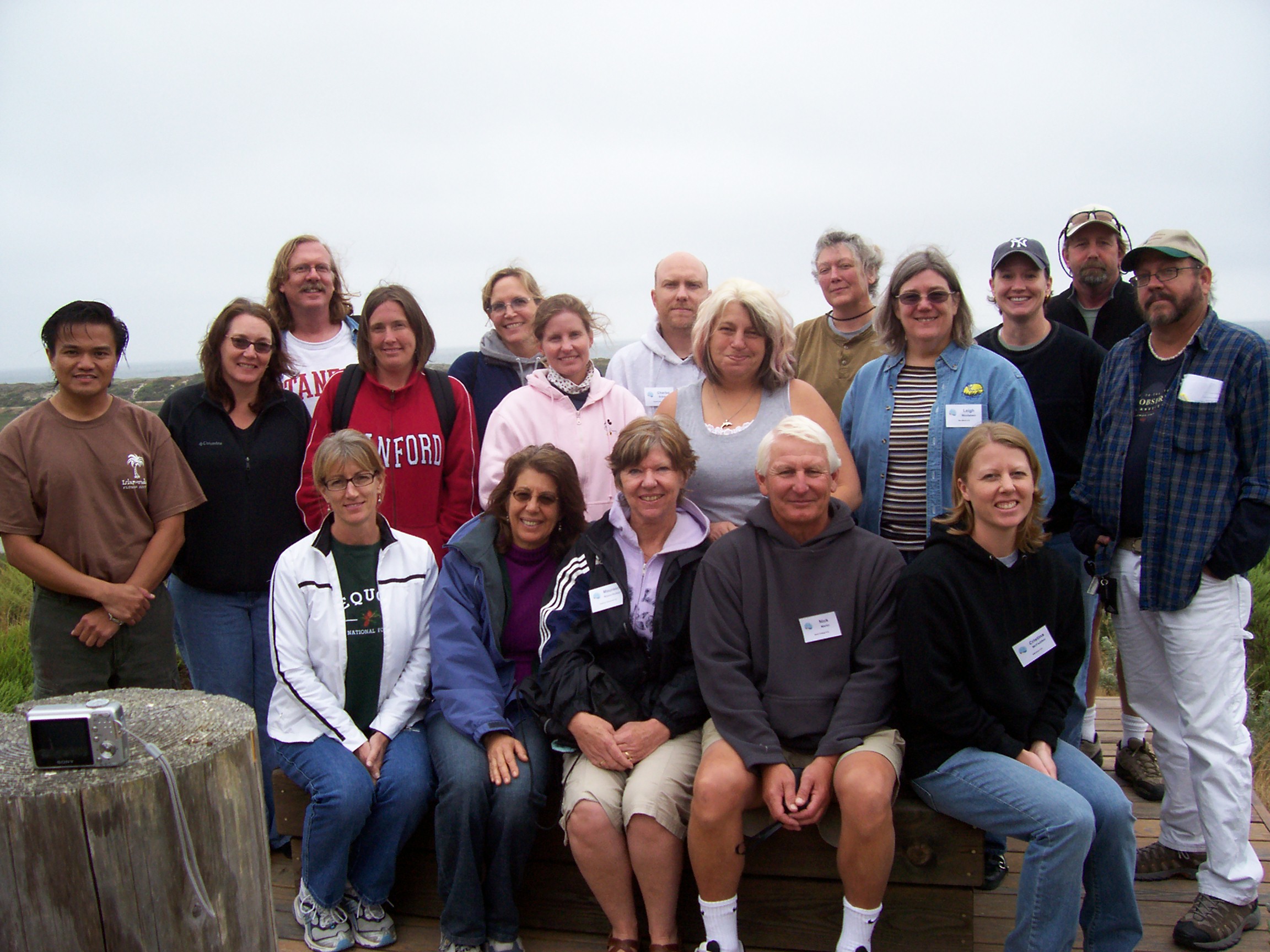
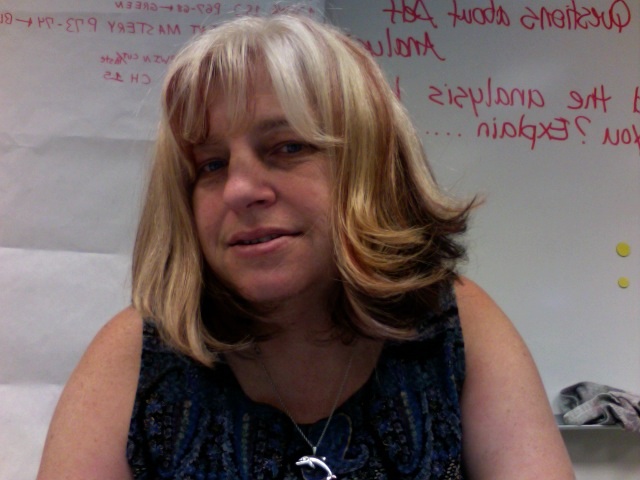
I am writing from home a day after my week at the Teacher Enhancement Program in Monterey Bay at the Moss Landing Marine Labs (part of the Cal State University system). I had a very good time, but I am pretty tired after all that work and fun. Simona Bartl, the Project Director is a serious scientist with a great sense of humor. She seems to understand the need to bridge the gap between research science in the laboratory and students’ understanding when we are in the classroom.
We had a variety of presenters from various levels of education and research in the Monterey area. What an honor! Some were MLML teaching assistants (aka graduate students), others were instructors from the Monterey Bay National Marine Sanctuary, Hopkins Marine Station and the Elkhorn Slough Estuarine Research Reserve. All presenters led activities both in the field and in the lab that let us see first hand how we can participate in scientific research with our own students.
Monday (6-23-08) we were at the Moss Landing Marine Laboratories all day. We toured the facility with Elsie and learned what the week was going to look like. We did an activity with Sacha (from MERITO) in which we modeled the shape of the Monterey Canyon in clay, and another in which we pretended to discover a deep sea organism. We had to list the adaptations to the environment and give it a scientific name according to normal naming conventions. This curriculum focuses on multi lingual learners who live near the oceans, but since I have used similar activities in my class, I think it’s just good teaching.
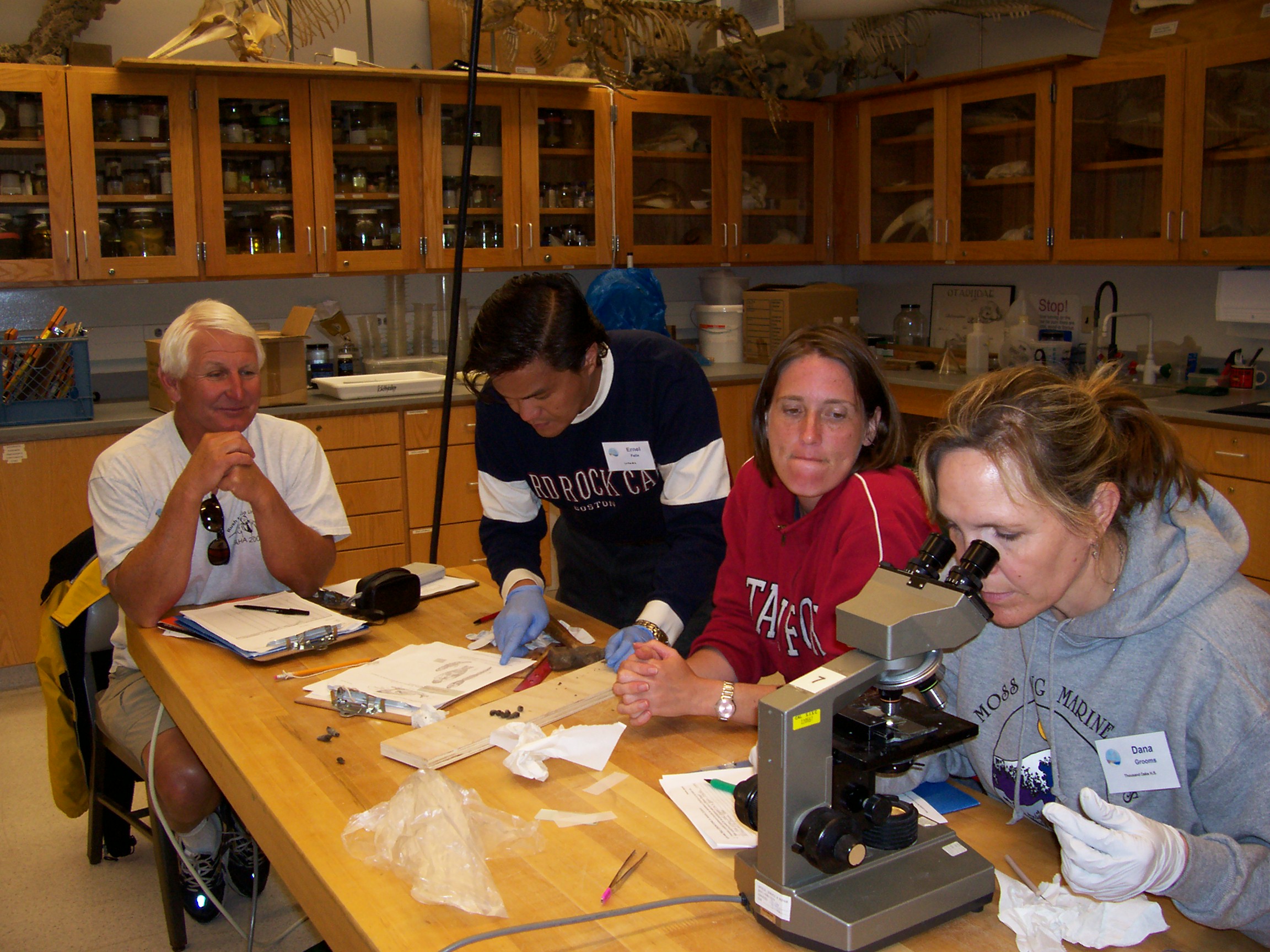
Tuesday (6-24-08) we went to the Elkhorn Slough with Kenton, Danielle and Elsie to study, count and collect an imported (invasive) species of snails. We later compared our numbers to last year’s research data. The original native species in the area has not been seen in over 35 years. The invader was brought in during the 30’s with the oyster cultures that were brought to the area for pearls and oyster meat. We also used microscopes to observe the parasites that are infecting this snail. We spent some time with Simona in the afternoon discussing and sharing lesson plans, activities and resources we use in our own practices. Since the 20 participating teachers cover a variety of curricula we got to discuss marine science with respect to our own classes and get some idea on how to enhance what we already do.
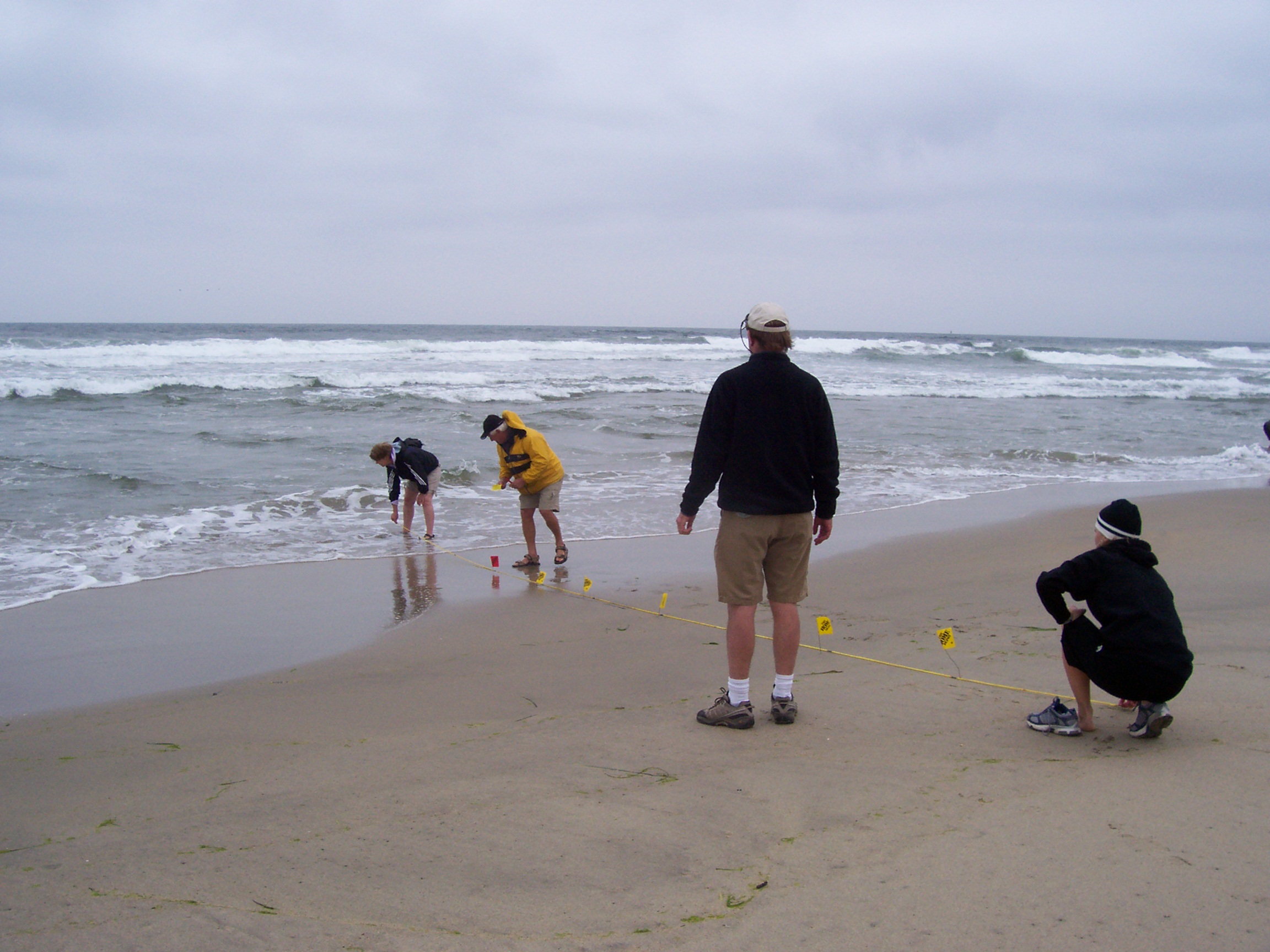
Wednesday (6-25-08) we went with Lisa and Erin to the Salinas River Beach to do a population study on the sand crabs there. It was cold and wet, but I loved being on the shore and in the water. We caught, measured, and recorded data on sand crabs. Later, we put in our numbers to an online sand crab-monitoring site (LiMPETS). We also checked some sand crabs for parasites while in the lab. These parasites actually harmfully infect shore birds and otters, so the scientists and agencies are keeping a close watch on the number of parasites found in a given area. I loved this day!!!
Thursday, (6-26-08) together with Kelly, Kevin and Elsie, we went out to one of the Moro Cojo
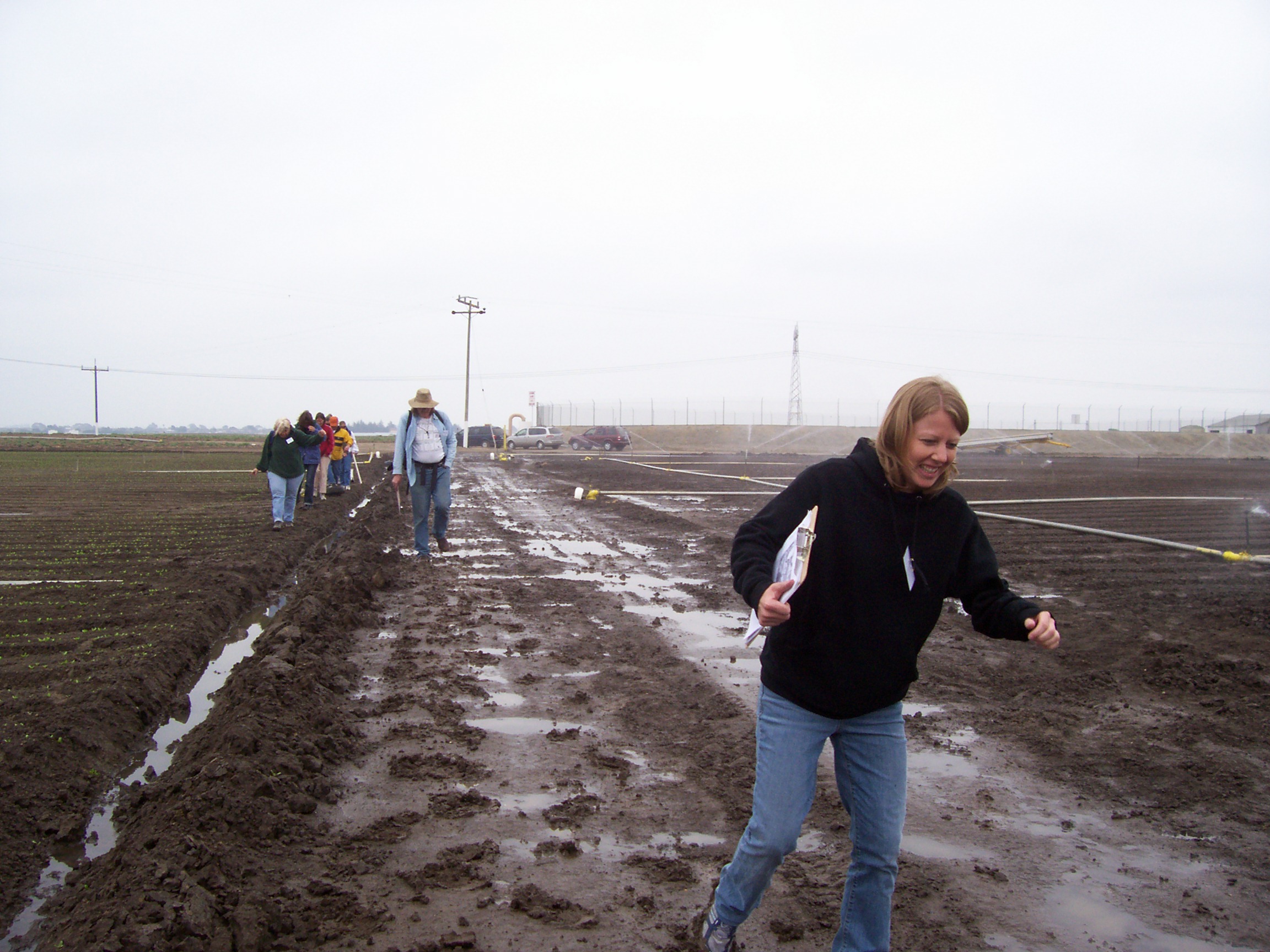
slough, where agricultural water enters the slough system. Here we checked the water quality. It was astounding the quantity of nitrates in the water at the upstream beginning of the study area and how the water plants and algae take out so much of the nitrate by the downstream area (less than a half mile away). The consequence of that is that the animals including fish cannot live because so much oxygen is removed from the water by the death and decay of all that algae. After getting one vehicle stuck in the mud, we had an adventure trying to get in and out of the study area including me losing one of my shoes in the muddy road. One of the people who came after me was able to retrieve it- yeah! When we came back to the lab we analyzed our results and compared them to other data sets throughout the year. Chad introduced us to SIMoN in the computer lab that afternoon. He showed us some GoogleEarth activities that go along with monitoring the impact of things like the trash sites near the Monterey Bay coastline.
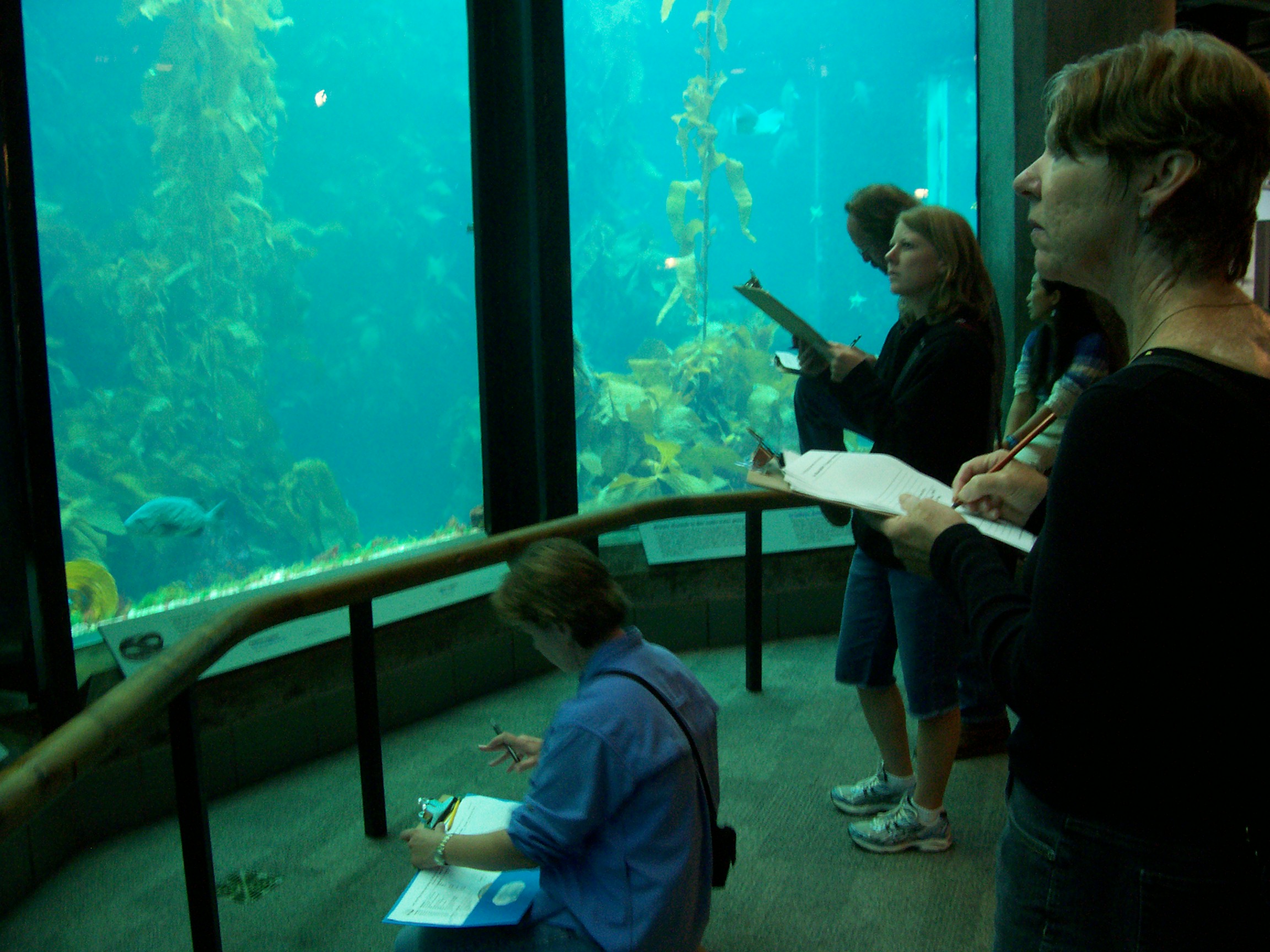
Friday (6-27-08) we met at the Monterey Bay Aquarium (an hour and a half before opening!) with Erin and Kristen to do our shark observations in the kelp tank and the open water tank. Before we had to get to work, we got to feed the bat rays. They seemed to prefer the shrimp rather than the squid- can’t say as I blame them. I am really not much into the invertebrate types of seafood either- I much prefer to eat fish! We spent part of the morning in the conference center analyzing the data from a study on the behavior/movements of a deepwater shark that is being studied by one of the grad students. What a great location for that kind of activity- a room with a view of the bay and the shore. How inspirational! Later in the afternoon we got to work at the Hopkins Marine research facility (associated with Stanford University). There we met with Pam, former high school biology teacher who is working with Dr. David Epel on developing science curriculum for high school students. She showed us her website (Virtual Urchin) and showed us how we can use it to enhance the instruction we do with real sea urchins to show fertilization and embryonic development. This collaboration is the kind of thing that is so important to bringing real science to our students.

